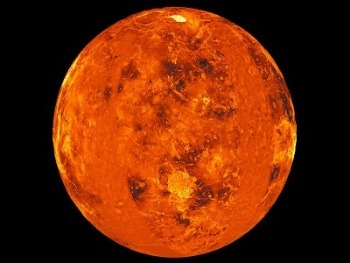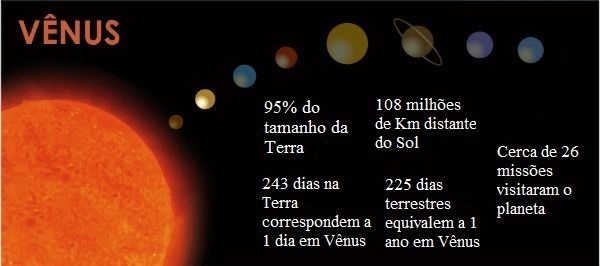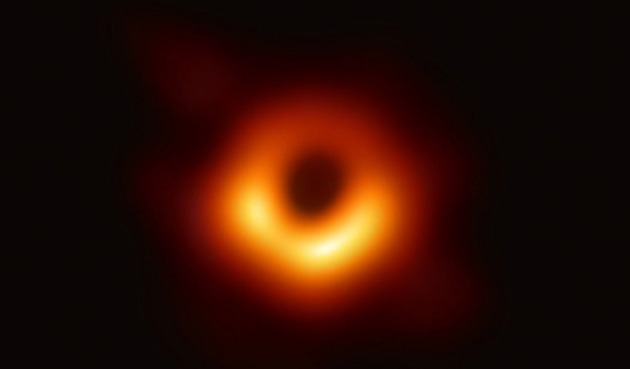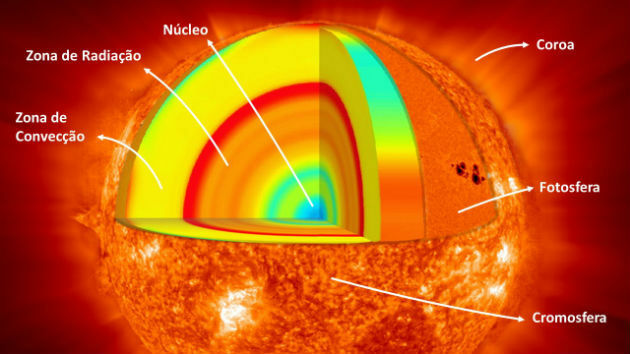Venus is the second planet in the Solar system closest to the Sun. It is about 800 million years old and beyond the Sun and Moon it is the brightest celestial body in the sky, which is why it has been known since antiquity.

Planet Venus Photo
Also called Dalva star, Morning Star, afternoon star and heaven's jewel, is considered a sister planet to Earth. This is due to the similarities in mass, density and volume between them.
The first mission to Venus dates back to 1961. It was called Venera 1 and it was Soviet, like most of the missions made to the planet.
Until 2016 the last mission was to Magellan, which started in May 1989 and ended in August 1990. With this, the number of missions was 26, of which 19 were Soviet and 7, North American.
Curiosities about Venus

Surface photo of Venus
- Venus is the closest planet to Earth.
- Venus rotates from east to west, contrary to all planets in the Solar System.
- The planet is named after Venus, the Roman goddess of beauty and love.
- Venus can be seen from Earth without the aid of equipment.
- It is the hottest planet, although it is not the closest to the Sun.
Read too:
- Solar system
- Planets of the Solar System
- Types of Planets
- Galileo Galilei
Venus Characteristics
Venus is 12,104 km in diameter, that is, its radius is equivalent to 6,052 km.
Its surface is covered with lava and composed mainly of carbon dioxide and sulfuric acid, which form dense clouds responsible for the greenhouse effect. That's what makes the temperature rise to enough levels to melt lead.
At least 97% of the atmospheric composition is made up of carbon dioxide. There is also 3% nitrogen and trace amounts of sulfur dioxide, water vapor, carbon monoxide, argon, helium, neon, hydrogen chloride and hydrogen fluoride.
Although it is farther from the Sun than Mercury, Venus' temperature is higher. There, it reaches 482 ºC on the surface due to the greenhouse effect of the planet's components.
 Main features of the planet Venus
Main features of the planet Venus
There are 4 terrestrial planets. Venus is one of them. Its peculiar glow is caused by the heavy atmosphere, which radiates the heat of sunlight onto the surface. Atmospheric pressure at sea level is 92 times that of Earth.
Venus has no satellites and its core is composed of iron with a radius of about 3,000 kilometers, in addition to a mantle of molten rock.
The topography is formed by large plains covered by lava and mountains and mountainous regions deformed by geological activity.
The highest peak on Venus is Maxwell Montes. Also commonly observed by scientists is the Aphrodite Terra mountainous complex, which extends over almost half of the entire Venusian equator.
The orbital speed of Venus is 35 kilometers per hour and the orbital eccentricity is circular, being considered the least eccentric in the Solar System.
Learn all about the planets in the solar system:
- Mercury
- Venus
- Earth
- Mars
- Jupiter
- Saturn
- Uranus
- Neptune



